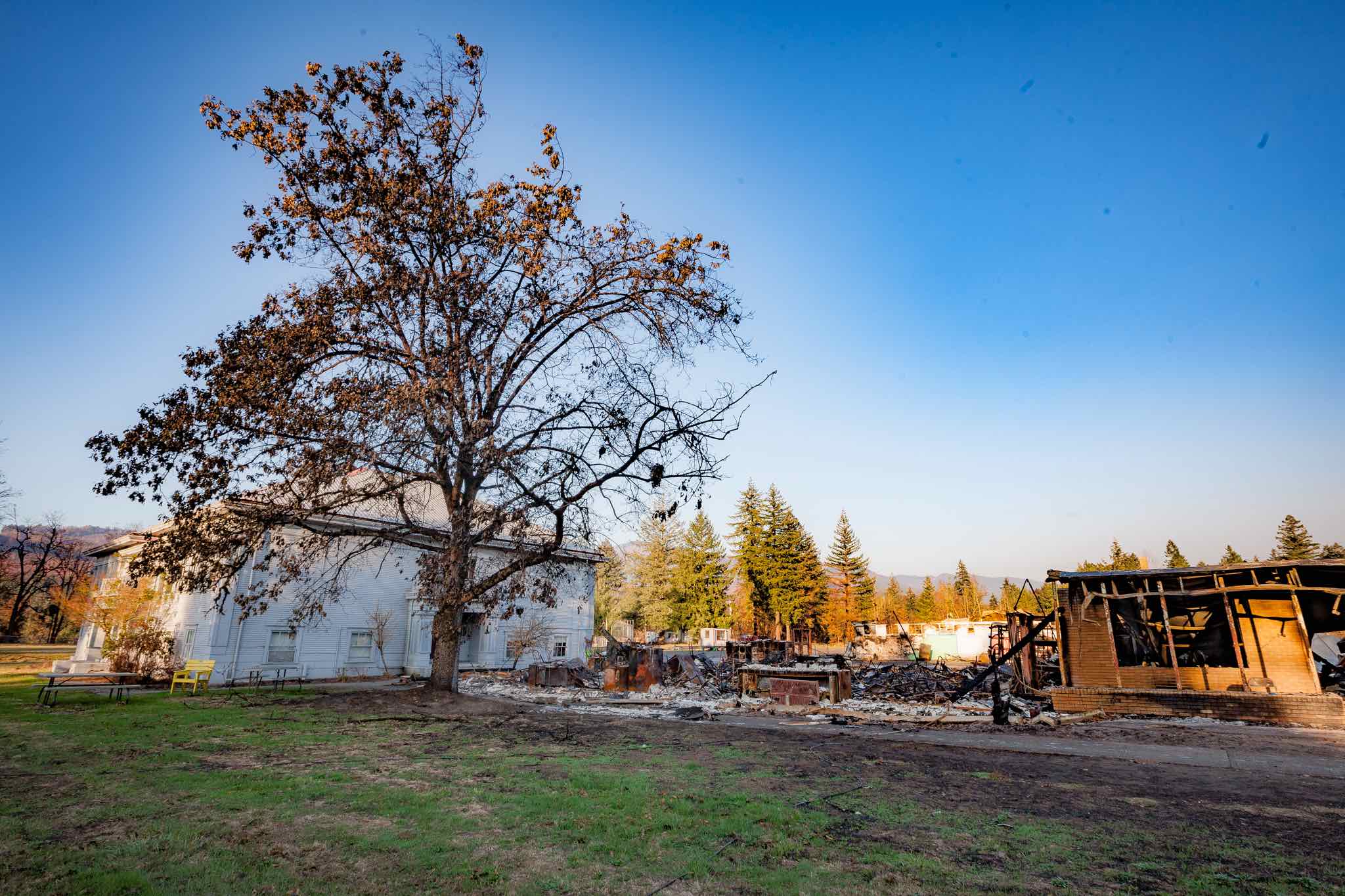
As a result of the 2020 Labor Day fires, hundreds of homes in the Santiam Canyon were reduced to ashes and dozens of businesses were razed. Four people lost their lives, and life has been altered for everyone who calls the community of Gates home.
According to the USDA Forest Service, in 2020, 2017, and 2015, more than 10 million acres burned nationwide. Nearly a quarter of the contiguous U.S. is at moderate to very high risk of wildfire. One-third of Oregon’s 4 million residents are currently living in areas of elevated risk of wildfire, and it is estimated that days with high wildfire potential will double by 2050. The threats of climate change to our personal safety, built environment, recreational opportunities, and the fabric of our heritage are happening now and will only grow stronger with time.
Now is the time to make resilience planning for wildfires, earthquakes, floods, tsunamis, hurricanes, and tornados standard practice in restoration and rehabilitation projects nationwide. Losing the places that anchor our communities and connect us to one another heightens the mental and emotional impact of climate-related disasters. Planning for the retention and successful restoration of historic buildings aids in the restoration of normalcy in the aftermath of a disaster. As we work together on long-term solutions to these challenges, Restore Oregon is using its network of resources to make resilience planning part of all historic preservation projects, mitigation, and advocacy efforts.
-
Historic communities, landmarks, and cultural resources have a new set of challenges: those related to climate change and sea level rise. New adaptation and mitigation tools and models are needed to support communities as they learn to adapt to a new normal. Climate change and resilience represent key issues in modern preservation, ranging from incorporating historic places into adaptation and mitigation planning to understanding intangible heritage and loss of cultural attachment to place in the face of land loss.
-
The Advisory Council on Historic Preservation is working to help ensure that the federal government addresses historic properties as it creates and implements sustainability and climate resilience policies and programs. The ACHP has convened a task force of its members to consider policy issues regarding climate change and historic properties and the role that the ACHP can play in addressing such issues.
-
In preparing for natural and climate-based disasters, homeowners face a distinct set of challenges related to physically securing their property and limiting their liability for damage and loss. While homeowners may rely to a certain extent on local, city, and state agencies to provide pre- and post-disaster services, they ultimately are responsible for caring for their properties in disaster scenarios. The National Trust for Historic Preservation has developed a website of resources designed to help homeowners understand the steps they may take to reduce the impact from disasters on their home and property.
-
According to the USDA Forest Service, wildfires have been growing in size, duration, and destructivity over the past 20 years. Growing wildfire risk is due to accumulating fuels, a warming climate, and expanding development in the wildland-urban interface. The risk has reached crisis proportions in the West, calling for decisive action to protect people and communities and improve forest health and resilience. It will take a paradigm shift in land management across jurisdictional boundaries to reduce risk and restore fire-adapted landscapes. In response, the U.S. Department of Agriculture, Forest Service is establishing a strategy for working with partners to dramatically increase fuels and forest health treatments by up to four times current treatment levels in the West.
-
Given the availability of funds to develop disaster plans, as well as the abundance of free planning information online and through statewide and local preservation groups, it makes very little sense not to develop a preservation-integrated disaster preparedness plan. FEMA's Pre-Disaster Mitigation Grant Program provides funds to states, territories, tribal governments, communities, and universities for hazard mitigation planning and the implementation of mitigation projects prior to a disaster event. Funding these plans and projects reduces overall risks to the population and structures, while also reducing reliance on funding from actual disaster declarations.

